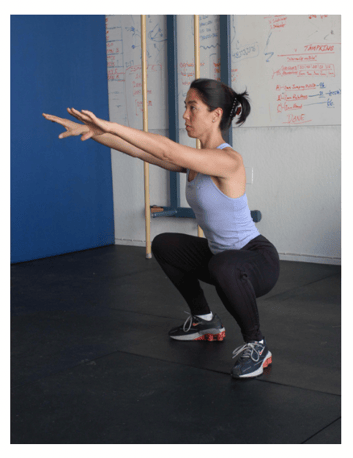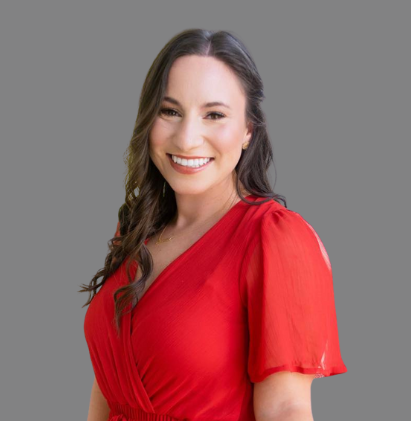MARCH NEWSLETTER
exercise of the month: squats
 The squat, simply put, is standing from a seated position. It is a functional movement, meaning you will use it in everyday activities and is essential to be able to perform. Standing up out of a chair or off the toilet are both examples of everyday activities that require you to squat. As with all functional movements, they require practice to keep the movement sound. The squat demands midline stability, posterior-chain (backside) engagement, and core-to-extremity movement and it can be used to move bodyweight or large loads in different positions. There are many variations of the movement as well as many benefits to squatting.
The squat, simply put, is standing from a seated position. It is a functional movement, meaning you will use it in everyday activities and is essential to be able to perform. Standing up out of a chair or off the toilet are both examples of everyday activities that require you to squat. As with all functional movements, they require practice to keep the movement sound. The squat demands midline stability, posterior-chain (backside) engagement, and core-to-extremity movement and it can be used to move bodyweight or large loads in different positions. There are many variations of the movement as well as many benefits to squatting.
The squat is a fundamental movement required for remaining functionally independent as one ages as well as developing and improving athleticism. Squatting regularly will keep your hips, back, and knees functioning properly in to your senior years. Not only is the squat NOT detrimental to your knees, it is remarkably rehabilitative of cranky, damaged or delicate knees. The bottom of a squat is what nature intended to be our sitting position (not a chair) and the rise from that bottom position to standing is the biomechanically sound method by which we stand up.
Performing the proper squat requires mobility throughout the entire body as well as motor control, meaning you should be able to efficiently utilize your available motion through proper muscle activation. Often times, poor mobility is to blame for poor movement but motor control is just as important.
HOW TO SQUAT:
- Heels between hip and shoulder width apart, toes slightly turned out
- Gaze forward
- Hips travel back as knees bend
- Chest stays up
- Lumbar curve maintained
- Heels stay down
- Knees track in line with toes
- Hips descend lower than knees (below parallel)
- Stand to full hip extension to complete the movement

SQUAT VARIATIONS:
- Sit-to-stands
- Air squat
- Single-leg squat
- Front squat
- Back squat
- Overhead squat
- Zercher squat
The squat mostly relies on lower-body muscles and targets hamstrings and glutes, but the quadriceps and adductors are heavily involved as well. The abs, obliques, and erector muscles are also needed to contract to maintain trunk stability throughout the movement. If you are injured or have bad knees, you can still squat but you want to find a depth at which you do not experience pain. You can also modify your squat by squatting to a target like a bench or chair.
🌻🐇holiday hours🌷🐣
On Friday March 29th all MTS locations will be closed for Good Friday.
Regular business hours will resume Saturday March 30th at Townhouse and Dulles. All other locations will resume normal business hours on Monday April 1st.
We hope you enjoy your holiday!
 March Class Schedules
March Class Schedules 
Changes at Townhouse:
![]() Adding Neurobics on Fridays at 11am starting March 8th!
Adding Neurobics on Fridays at 11am starting March 8th!

Changes at Dulles:
![]() Changing Pilates on Tuesdays and Thursdays to 10am!
Changing Pilates on Tuesdays and Thursdays to 10am!
![]() Temporarily removing Tuesday and Thursday Deep Water Aerobics!
Temporarily removing Tuesday and Thursday Deep Water Aerobics!

Changes at Youngsville:
![]() Adding Power Hour on Tuesdays and Thursdays at 11am!
Adding Power Hour on Tuesdays and Thursdays at 11am!
![]() Adding Flex & Flow on Tuesdays and Thursdays at 12pm!
Adding Flex & Flow on Tuesdays and Thursdays at 12pm!

🥕Healthy Eating🍎
🍽️Learn how to eat better with Myplate🍽️
Use MyPlate as a visual key to making smarter choices when it comes to your daily intake. Make sure to include each of the five food groups. Visit MyPlate.gov for tips and resources on how to support healthy eating. These changes may seem small and insignificant now, but they add up over time and can make all the difference.
Fruits:
Food from the fruit group may be fresh, frozen, canned, or dried/dehydrated and can be eaten whole, cut up, pureed (mashed), or cooked.
Vegetables:
Any vegetable may be raw or cooked and can be fresh, frozen, canned, dried, whole, cut-up, or mashed. Vegetables are further divided by nutritional content into 5 subgroups: dark green; red and orange; beans, peas, and lentils; starchy; and other vegetables.
Grains:
Wheat, rice, oats, cornmeal, barley, or another cereal grain are considered to be grains. Food like bread, pasta, breakfast cereals, grits, tortillas, popcorn, rice, and oatmeal are also included in the Grains Group.
Protein:
Seafood, meat, poultry, eggs, beans, peas, lentils, nuts, seeds, and soy products, are all part of the Protein Group.
Dairy:
Milk, yogurt, cheese, lactose-free milk, fortified soy milk and yogurt are all part of the Dairy group. Be careful not to over consume foods that are made from milk but have little calcium and a high fat content such as cream cheese, sour cream and butter.
MyPlate.gov lists the following Health Benefits concerning the 5 Food Groups:
- Eating a diet rich in fruits and vegetables as part of an overall healthy diet may reduce the risk for heart disease, including heart attack and stroke.
- Eating a diet rich in fruits and vegetables as part of an overall healthy diet may protect against certain types of cancers.
- Adding fruit can help increase the amount of fiber and potassium we eat. These are important nutrients that many people do not get enough of.
- As part of an overall healthy diet, eating foods lower in calories per cup, such as fruits and vegetables, instead of higher-calorie food may help you lower your calorie intake.
- Adding vegetables helps increase fiber and potassium, which many Americans do not get enough of.
- Eating whole grains as part of a healthy diet may reduce the risk of getting heart disease.
- Eating whole grain foods that have fiber, as part of an overall healthy diet, can support healthy digestion.
- Eating whole grains, as part of an overall healthy diet, may help with weight management.
- Eating grain products with folate before and during pregnancy as part of an overall healthy diet helps prevent neural tube defects. Neural tube defects are birth defects of the brain, spine, or spinal cord.
- Proteins function as building blocks for bones, muscles, cartilage, skin, and blood. They are also building blocks for enzymes, hormones, and vitamins. Proteins are one of three nutrients that provide calories (the others are fat and carbohydrates).
- Nutrients provided by various protein foods can differ. Varying your protein food choices can provide your body with a range of nutrients designed to keep your body functioning well. B vitamins help build tissue and aid in forming red blood cells. Iron can prevent anemia. Magnesium helps build bones and supports muscle function. Zinc can support your immune systems.
- EPA and DHA are omega-3 fatty acids found in varying amounts in seafood. Eating 8 ounces per week of seafood may help reduce the risk for heart disease.
- Improve bone health, especially in children and adolescents when bone mass is being built.
- Promote bone health and prevent the start of osteoporosis in adults.
💪 Meet Collin! 💪

Collin joined our MTS Wellness team earlier this year and is currently working as one of our Personal Trainers.
"I have been a Certified Personal Trainer going on 4 years now. I found my passion for helping others with their physical health through managing my own health due to complications from Type 1 Diabetes. I have been exercising on a daily basis for 9 years now. I am 23 years of age from Lafayette, Louisiana. I have a wife and 3 stepsons who motivate me to make a difference in peoples lives everyday."
We're hiring!
 MTS Wellness is hiring for PRN instructors, if you know someone interested in joining our team please have them send their resume to wellness@mtspts.com. We are in need of water aerobics instructors, cycling instructors, yoga instructors and more!
MTS Wellness is hiring for PRN instructors, if you know someone interested in joining our team please have them send their resume to wellness@mtspts.com. We are in need of water aerobics instructors, cycling instructors, yoga instructors and more!
We are excited to bring on new members on our Wellness Team! Over the next few weeks you will start to see new faces shadowing current instructors in class and eventually teaching some classes. We thank you for your patience as we go through a new transition.
Virtual Memberships and Virtual Add-on Service
.jpeg?width=600&height=386&name=Untitled%20design%20(1).jpeg)
MTS offers a virtual wellness membership for $23.99 per month.
This includes access to all of our live scheduled virtual classes and our video library, which allows you to participate in your favorite MTS classes on your own time. All you need is a smart phone, tablet or computer to get set up and started today!
We now offer a virtual add-on service for only $11.99 per month added to your regular membership. With this add-on service you will have it all! It allows for you to come in house to use equipment AND have access to classes using our virtual platform.
Meet Our Wellness Team
-
Brian Broussard Therapy & Wellness Coach
-
Laura Byerley Therapy & Wellness Coach
-
Taylor East Therapy & Wellness Coach
-
Laurel Alleman Fitness Staff
Our wellness team is eager to welcome you into your gym routine! We'd love to assist you with establishing an exercise regimen or guiding you to choose a class that best fits your needs! We are here to help answer any and all of your questions!
Visit our website www.mtsphysicaltherapy.com for all your wellness needs!
As always, you can reach out to us by email at wellness@mtspts.com. You can reach Laurel @ Youngsville at 337-856-1717, Taylor @ Dulles at 337-703-3604, or Laura @ Townhouse at 337-571-1200.
About MTS Physcial Therapy & Wellness
 MTS offers full physical therapy services, along with all inclusive wellness and gym memberships serving the Acadiana Area. Our approach is a concept that embraces all aspects of a person’s needs. We help you better understand the importance of body, mind and soul to your overall well-being.
MTS offers full physical therapy services, along with all inclusive wellness and gym memberships serving the Acadiana Area. Our approach is a concept that embraces all aspects of a person’s needs. We help you better understand the importance of body, mind and soul to your overall well-being.
With complete physical therapy services, relaxed settings, and supportive and encouraging staff at all locations, we will make it possible for you to get back to living LIFE again!




.png)




